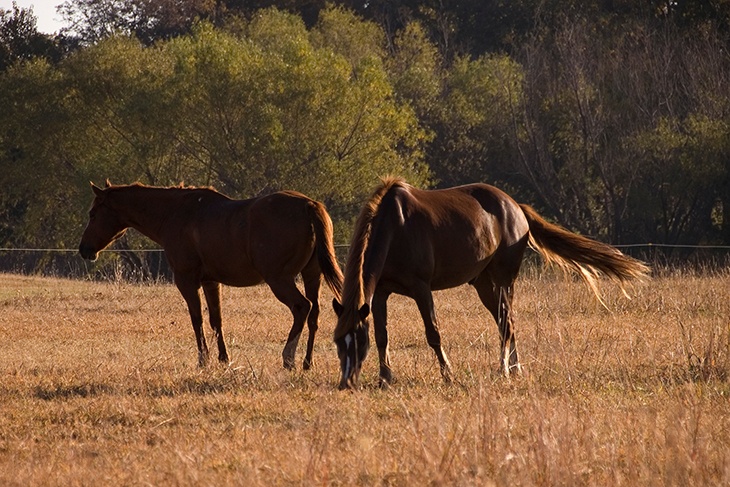Source: Oklahoma State University Extension | Aug. 2, 2019

Oklahoma livestock operators are being cautioned to be extra vigilant for symptoms of vesicular stomatitis in their animals, and to report anything suspicious to their local veterinarians immediately.
“We passed on information earlier this summer about the disease after confirmed cases in Texas and Colorado, and Oklahoma recently had its first confirmed case since the 1990s,” said Dr. Rod Hall, state veterinarian with the Oklahoma Department of Agriculture, Food and Forestry. “The affected premises in Tillman County has been quarantined.”
Vesicular stomatitis is a viral disease that affects primarily horses and cattle. However, pigs, sheep, goats, llamas and alpacas also can be infected, and on rare occasions humans. Numerous species of wildlife – including deer, bobcats and raccoons – can become infected as well.
“The disease normally occurs in the western and southwestern United States during the warmer months of the year, and tends to be seen along waterways,” said Dr. Barry Whitworth, OSU Cooperative Extension veterinarian and area food animal quality and health specialist. “Transmission occurs by direct contact with infected animals or by blood-feeding insects.”
Disease characteristics include fever at the onset. The first most commonly recognized sign is excessive salivation. If the mouth is examined in early stages of the disease, it will reveal blister-like lesions known as vesicles.
“Often the vesicles are not seen because they have ruptured before the animal is checked,” Whitworth said. “It is more likely to find ulcers or erosions on the inner surfaces of the lips, tongue, dental pad and gums. Sometimes crusty lesions can be seen on lips, nostrils, teats, prepuce, vulva and coronary bands.”
Livestock may be reluctant to eat or drink because of the pain and discomfort. They also may show indications of lameness if foot lesions are present.
The disease typically resolves itself in 10 to 14 days. However, while most animals do not die from the disease, economic losses to livestock operators potentially can be significant in terms of lost milk production and weight loss in their animals.
In a phone interview, Hall confirmed the Tillman County case began with small sores at the corners of the animal’s lips and then progressed to larger sores on the lips and its legs.
“One of the most notable concerns with vesicular stomatitis is distinguishing it from foot and mouth disease and swine vesicular disease, both foreign animal diseases with similar clinical signs,” Whitworth said. “The only way to distinguished between these diseases is through laboratory testing.”
Whitworth and Hall both repeatedly stressed the importance of livestock operators communicating with their local veterinarians in a timely manner.
“Producers should be working closely with their local veterinarians to manage their herd health all the time, and the confirmed case of vesicular stomatitis is just one of many reasons why,” Hall said. “I wish to thank the accredited veterinarian who reported this case, and also thank others who have reported suspicious cases that turned out to be negative.”
Vesicular stomatitis is recognized internationally as a reportable disease, and exports of livestock, horses and animal products from the United States could be restricted if vesicular stomatitis were allowed to spread in America.
